Remember, go slowly, do not rush, savor each step. There are many things embedded in the process. We want your brain to be able to catch up with your enthusiasm. Taking more time at the beginning will make your program stick and go deeper. Use the resources of the community for support.
Step One – Breakfast
Step One has four parts. We start with whichever is the the easiest of the four parts and then simply take small steps to add the other parts one at a time.
Every Day
Have breakfast every single day no matter what.Within an Hour
Eat within an hour of getting up no matter what.Enough Protein
Have enough protein for your body weight.A Complex Carb
Have a full serving of some sort of complex carbohydrate with your breakfast.
Calculating the amount of protein takes a little bit of work. Take your weight in pounds and multiply it by .5 to get the number of grams of protein you will have for the day. Have 1/3 of that for breakfast.
Remember that the grams of food is not the same as the grams of protein in the food.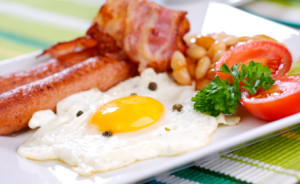
If you weigh more than 200 pounds, simply use 200 as your weight. If you weigh less than 120, use that number as your weight. If you are pregnant, nursing, a teenager or you exercise a lot, you may need more protein. Simply start with this calculation though.
Make things simple and only count the protein in protein foods. Many of us find that having a shake in the morning works really well.
Step Two – Journal
The food journal helps you remember the details of each day. It provides a baseline for you at the beginning of your program. It gives you a picture of “before”. As you continue the program, you will enjoy being able to look back at your journal and see how far you have come.
Your food journal will also teach you to read your own body. Your body doesn’t have a computer printout to tell you directly what is going on with it, but it gives you clues and symptoms that hint at the bigger picture. These clues may not be in words, but your body talks in a consistent and predictable way. You just have to learn its language.
Here’s what to include:
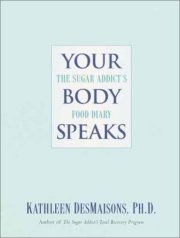
• The date and time of your entry
• What you eat or drink
• How you feel emotionally
• How you feel physically
Click here to order a food journal from us. It is very easy to use and will make the process much easier.
Read Potatoes Not Prozac (pp. 82-94) to learn more about your food journal.
Step Three – Three Meals
Protein at Each Meal
Have the right amount of protein at each meal.Carb with Each Meal
Have a serving of carbohydrates with each meal.Pay Attention to Time
Find the right intervals for your meals, usually between 4-5 hours.Sweets With Your Meals
Move your sweets to after your meal.
Many people think the hardest step is going off of sugar. It is not. Step 3 takes the most skill, time and practice. Step 3 is about learning to create steady state. Master this and everything changes.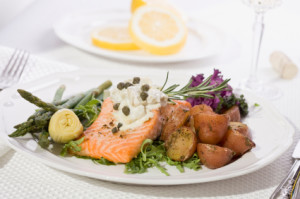
The key to Step 3 is taking what we call “nano steps” that are tiny changes that build over time. Mastering lunch, then mastering dinner. Learning how to discover the right intervals between meals for your own body and life style. Learning to move sweets to after your meals rather than having a bowl of popcorn or ice cream at 9 PM.
Over time you will learn to have wonderful food that tastes great and you will start to relax and really enjoy what you are eating.
Step Four – Vitamins and the Potato
Vitamins
Take vitamin C, B-Complex and Zinc. See pp. in Potatoes Not Prozac for more details.The Potato
Have a potato 3 hours after dinner.
The vitamins help support carbohydrate metabolism. The potato 3 hours after dinner actually has a huge impact on your serotonin levels. It will calm you and enhance your dreaming. It will also turn on your “just say no” switch. The butter is good, it helps slow the effect to just the right level for your brain.
levels. It will calm you and enhance your dreaming. It will also turn on your “just say no” switch. The butter is good, it helps slow the effect to just the right level for your brain.
It is good medicine. Don’t be afraid of it. Potatoes are a miracle for sugar sensitive people. if you are diabetic use a sweet potato. If you want to read all about the neurochemistry of the potato go to pp. of Potatoes Not Prozac.
Step Five – Whites to Browns (whole grains)
 For most people Step 5 is the easiest and usually simply flows into the other steps. You simply replace refined white starches with whole grains and complex carbohydrates. In an era of carb phobia, our steps offer and refreshing and practical approach to a joyful celebration of good and nutritious foods.
For most people Step 5 is the easiest and usually simply flows into the other steps. You simply replace refined white starches with whole grains and complex carbohydrates. In an era of carb phobia, our steps offer and refreshing and practical approach to a joyful celebration of good and nutritious foods.
Some people decide to go wheat or gluten free, some decide to adjust their carbs as the move into a weight loss phase, but everyone makes these decisions in an informed and thoughtful way. We have learned that “best browns” are essential for the sugar sensitive brain.
Step Six – And Now the Sugar
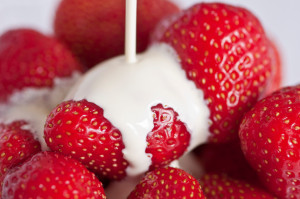 Ironically going off of sugar is one of the easiest steps. Often it simply happens without your even noticing. You have strawberries and cream for desert and Pellegrino instead of wine.
Ironically going off of sugar is one of the easiest steps. Often it simply happens without your even noticing. You have strawberries and cream for desert and Pellegrino instead of wine.
If you save Step 6 until after you have done the other steps, there is no drama, no withdrawal, no craving and no fuss. Sugar simply does not call you now.
Yes, we have fruit. Yes, we are attentive. But we are not fearful about sugar sneaking in and clobbering us because we know what we are eating. We don’t drink alcohol because it is liquid sugar. We do have ketchup but we ask about sauces and things with unknown ingredients. The key is the no drama part.
Step Seven – Living a Joyful Life
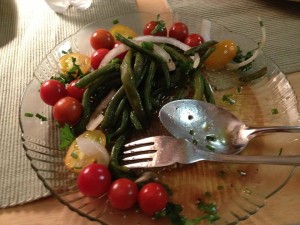 Step 7 is the hardest to describe. Think of a life filled with relaxation, focus and intention. As you are balanced, you can turn to creating the life you always hoped for but could never quite get to or do.
Step 7 is the hardest to describe. Think of a life filled with relaxation, focus and intention. As you are balanced, you can turn to creating the life you always hoped for but could never quite get to or do.
Does this mean it is always easy. No. It means you meet challenge, sorrow or hard things with a whole different feeling. It means blame and entitlement shift into taking responsibility and humility. It means anger gives way to problem solving. It means perfectionism becomes attentive caring. It means having a life we never, ever imagined could happen.
